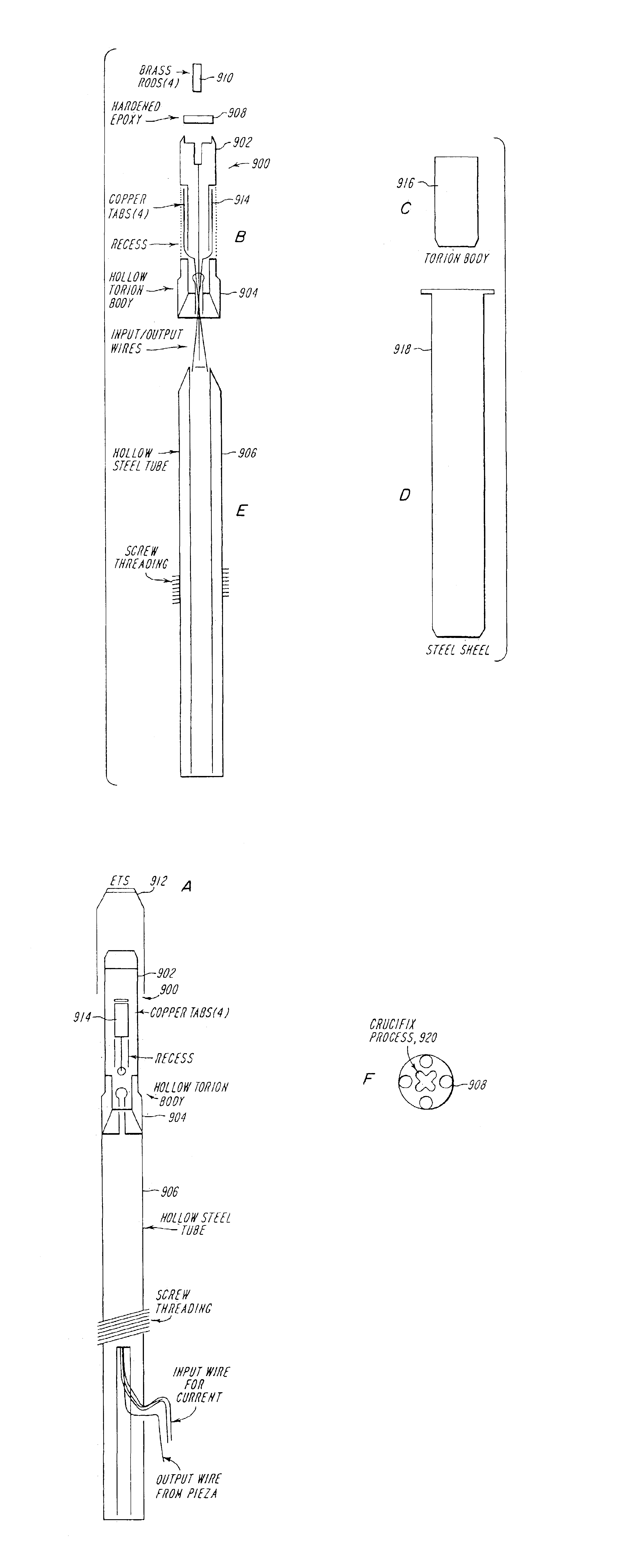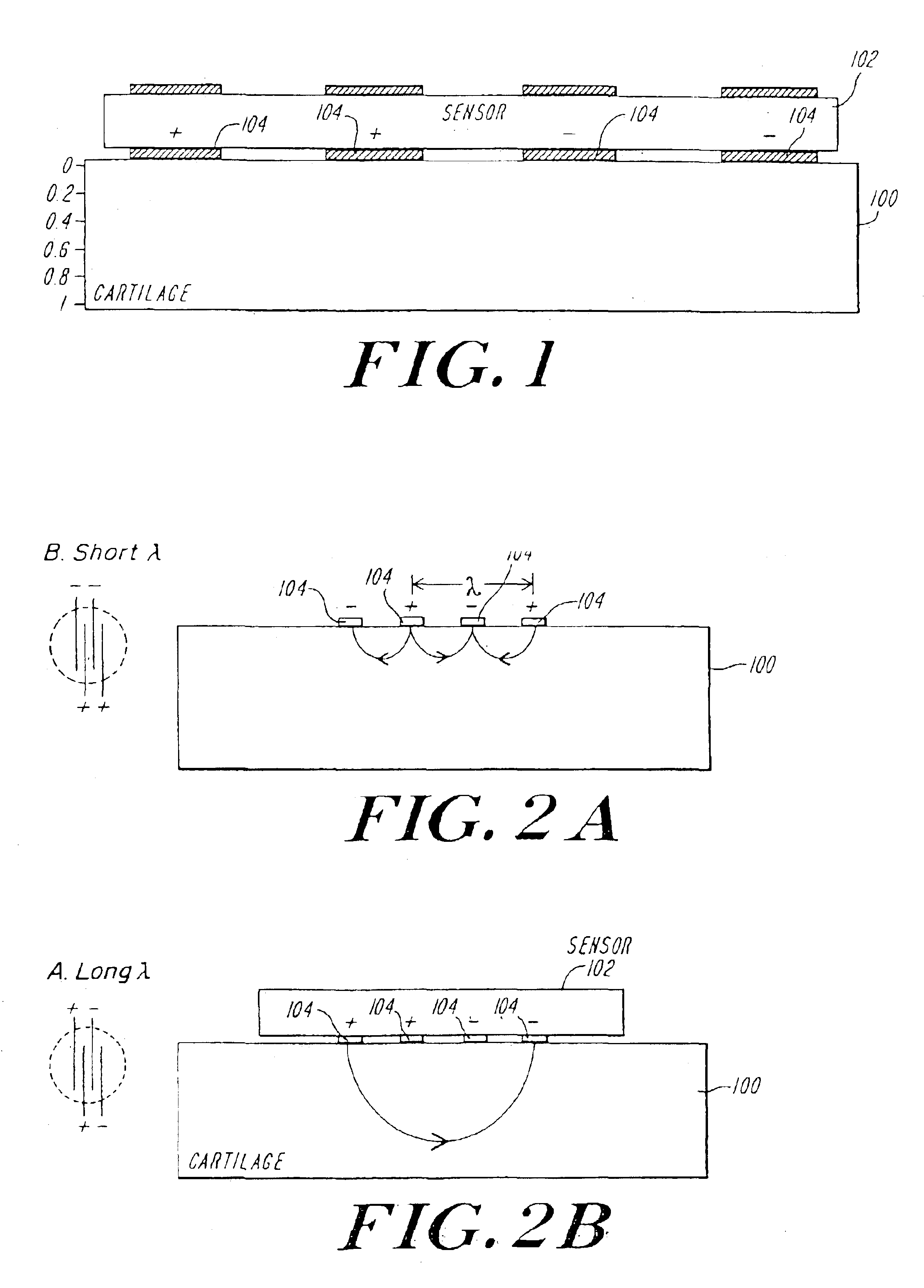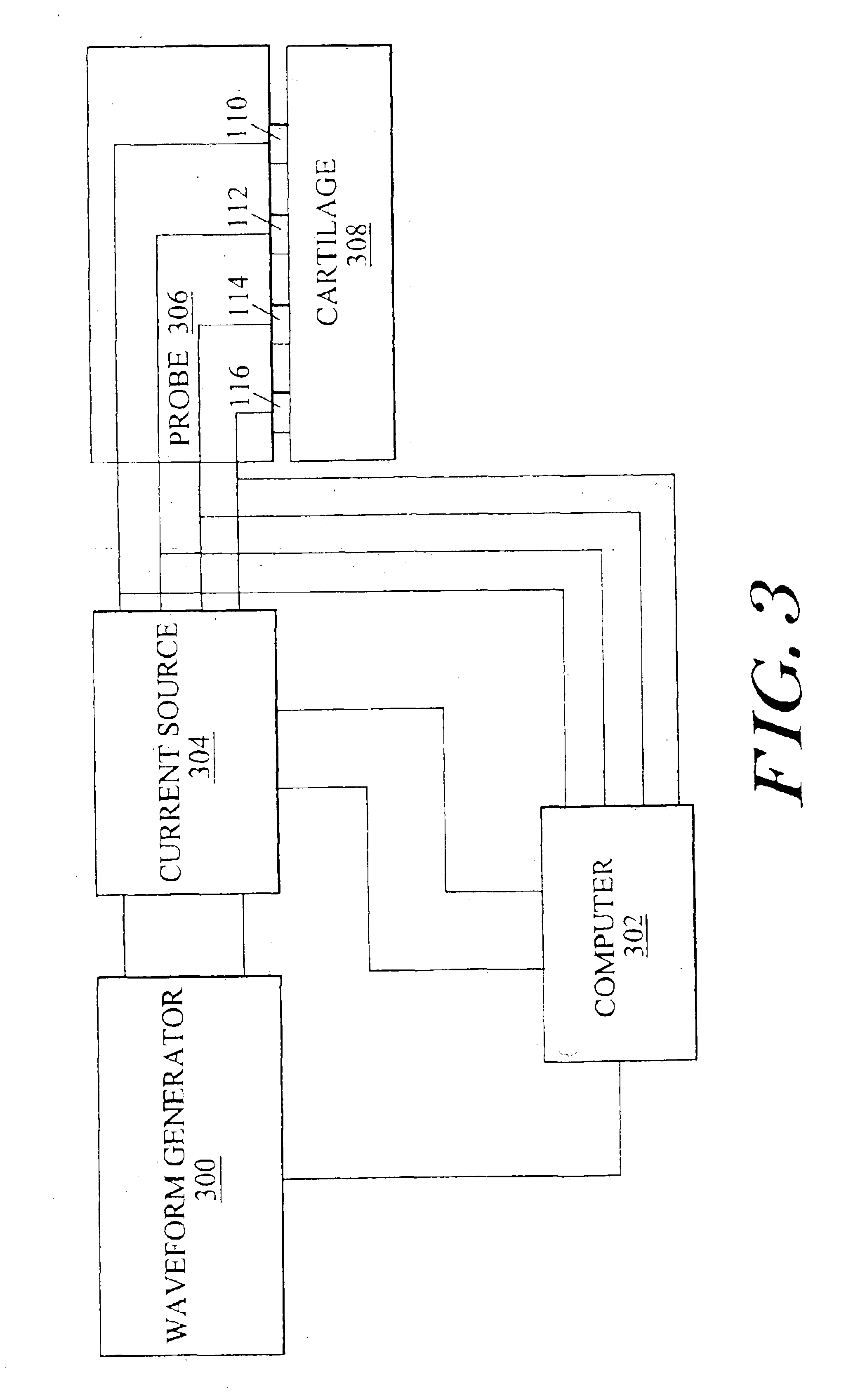Arthroscopic impedance probe to detect cartilage degeneration
a technology of impedance probe and arthroscopic probe, which is applied in the field of non-destructive arthroscopic diagnostic probes for detecting degen, can solve problems such as voltage difference across electrodes, and achieve the effects of resisting compressive loading, high swelling pressure, and resisting tension and shear loading
- Summary
- Abstract
- Description
- Claims
- Application Information
AI Technical Summary
Benefits of technology
Problems solved by technology
Method used
Image
Examples
Embodiment Construction
Operation of the Invention
When current is applied to articular cartilage there is a distribution of current density and an electric field within the tissue, and also an associated voltage drop across the electrodes applying the current. The amplitude of the measured voltage drop between electrodes divided by the applied current amplitude is defined as the electrical impedance. The electrical impedance of the tissue for frequency ranges at least up to approximately 1 kHz, and possibly further, is dominated by the resistance of the hydrated ECM and this resistance is inversely proportional to the density of mobile ions within the intratissue fluid. Thus, the electrical impedance of the tissue will increase with decreasing PG fixed charge content or increased swelling at constant PG content, since both these conditions lead to a lower concentration of mobile ions in the ECM by Donnan equilibrium. In addition, collagen network degradation will alter impedance.
This change in impedance du...
PUM
 Login to View More
Login to View More Abstract
Description
Claims
Application Information
 Login to View More
Login to View More - R&D
- Intellectual Property
- Life Sciences
- Materials
- Tech Scout
- Unparalleled Data Quality
- Higher Quality Content
- 60% Fewer Hallucinations
Browse by: Latest US Patents, China's latest patents, Technical Efficacy Thesaurus, Application Domain, Technology Topic, Popular Technical Reports.
© 2025 PatSnap. All rights reserved.Legal|Privacy policy|Modern Slavery Act Transparency Statement|Sitemap|About US| Contact US: help@patsnap.com



